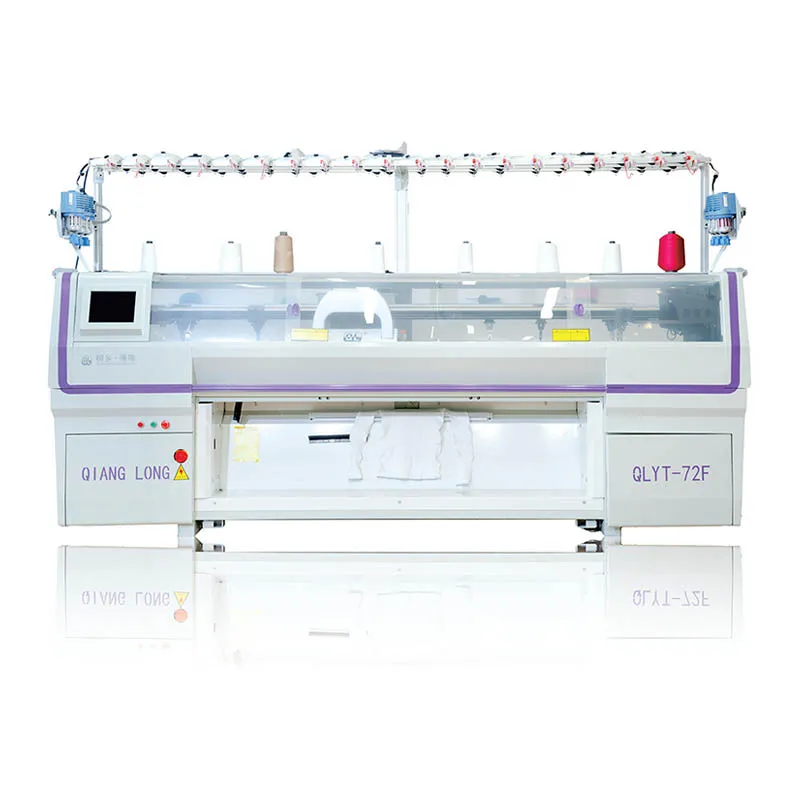Motorized Feeder: An Essential Component for Precision in Flat Knitting Machines
2024-12-10
A motorized feeder is a critical component in modern flat knitting machines, designed to control the delivery of yarn with high precision and consistency. It plays a significant role in ensuring smooth operation, uniform fabric quality, and efficient production. Here’s a closer look at motorized feeders, their functions, and benefits.
What is a Motorized Feeder?
A motorized feeder is a mechanism integrated into knitting machines that uses a motor to regulate yarn feeding. Unlike traditional passive feeders, motorized feeders actively control the speed, tension, and delivery of yarn, adapting to the machine’s requirements and the complexity of the pattern being produced.

Functions of a Motorized Feeder
1. Consistent Yarn Delivery: Ensures the yarn is fed at a uniform speed and tension, reducing the risk of uneven stitches.
2. Tension Control: Actively manages yarn tension, crucial for producing high-quality, intricate patterns.
3. Automated Adjustment: Adapts yarn feeding speed based on fabric density, type, and knitting pattern.
4. Error Reduction: Minimizes yarn breakage, dropped stitches, and other defects caused by inconsistent feeding.
Advantages of Using a Motorized Feeder
1. Enhanced Fabric Quality:
- Produces even stitches and maintains consistent texture.
- Reduces defects like puckering or loose loops.
2. Increased Production Efficiency:
- Speeds up production by ensuring smooth operation.
- Reduces machine downtime caused by yarn feeding issues.
3. Versatility:
- Supports a wide range of yarn types, from fine to bulky.
- Accommodates complex patterns requiring variable yarn tension.
4. Reduced Operator Intervention:
- Automatically adjusts feeding parameters, minimizing manual adjustments.
- Simplifies the operation of advanced knitting patterns.
5. Durability and Reliability:
- Built with precision motors and durable materials, ensuring long-lasting performance.
Maintenance Tips for Motorized Feeders
- Regular Cleaning: Remove lint, dust, and yarn debris to prevent clogging or motor strain.
- Lubrication: Keep moving parts well-lubricated to ensure smooth operation.
- Inspection: Regularly check for worn-out belts, pulleys, or motor components.
- Software Updates: For feeders with programmable motors, ensure the firmware is updated to the latest version.
- Calibration: Periodically calibrate the feeder to maintain optimal tension and feeding speed.
Applications in Knitting Machines
Motorized feeders are commonly used in:
- Industrial Flat Knitting Machines: For producing garments, accessories, and technical textiles with high precision.
- Circular Knitting Machines: Where uniform yarn delivery is critical for seamless knitting.
- Specialty Machines: Designed for intricate patterns or high-performance fabrics.
Future Trends in Motorized Feeders
With advancements in textile machinery, motorized feeders are becoming smarter and more adaptable. Integration with IoT (Internet of Things) allows real-time monitoring and remote adjustments, further enhancing efficiency and productivity. These innovations promise to make motorized feeders indispensable in modern textile manufacturing.
By incorporating motorized feeders into flat knitting machines, manufacturers can achieve superior fabric quality, greater operational efficiency, and the ability to tackle complex knitting challenges with ease.


